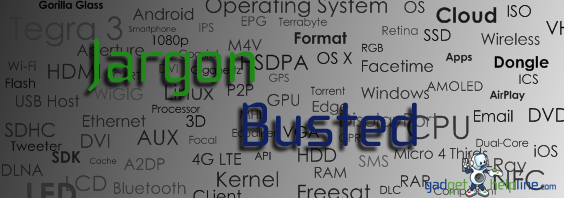If you’ve looked at upgrading your mobile phone within the past 6 months you will have probably encountered these three little letters: NFC. It’s yet another technology that has been abbreviated to letters and it’s slowly started creeping into the specifications list on a lot of mobile devices lately.
What is it?
NFC stands for Near Field Communications, and it’s a form of wireless interaction technology, like Bluetooth. Designed to transmit small amounts of data between two devices over a short distance, it’s a relatively new technology and has only really started to appear in mainstream products in the last year, especially in the past 6 months.
Where NFC differs from Bluetooth is in how it creates a connection between two devices. With Bluetooth you typically have to enter menus, search for devices and enter a pairing code in order to establish a connection. However, with NFC you simply have to touch two devices together or place them in close proximity of each other in order to establish a connection.
NFC’s main benefits are speed and ease of use, and it’s generally associated with brief interactions, such as sharing a photo between two devices, or ‘checking in’ somewhere using a GPS location.
How does it work?
For NFC to work you need two devices that use the standard – that can mean two smartphones, a smartphone and a tablet, or just a smartphone and an NFC-programmed ‘tag’, which could be a poster, sticker or key fob, for instance.
Between devices it can be used to make a quick file transfer, for instance a photo or a contact. Arguably it’s most useful application is in advertising – a poster or sticker for example can be created using an NFC chip, and smartphone users are invited to touch their device against it in order to learn more about a product.
A smartphone or tablet will feature an NFC transceiver, while a poster, sticker or NFC tag can be encoded with a small amount of data that a device can then read and interact with. For example, a wireless headset or speaker could contain the necessary information for creating a pairing, so that when you touch your phone against it, the pairing is instantly made. This is where NFC has its advantages over Bluetooth, offering quick and easy pairing with wireless products.
Many places in the U.S are now plastering NFC stickers inside shops, restaurants and bars to allow customers to quickly scan their phone and ‘check in’ where they are using social sites Foursquare, Facebook and Twitter.
Where can I find it?
Smartphones and tablets are the primary devices that make use of NFC tech these days. Android and BlackBerry are currently leading the way with NFC, with some of the latest BlackBerry smartphones such as the Bold 9900 containing an NFC chip, and Android 4.0 using NFC for one of its main features, Android Beam.
With Android Beam two NFC-capable Android 4.0 devices can be touched together to share content – this could be a YouTube video that you’re currently watching, a photo or a cool website. Once the two devices touch for a second both users will feel a buzz before the content makes the jump wirelessly to the second device within seconds.
Several BlackBerry 7 smartphones including the Bold 9900 and 9790 feature NFC chips along with an application called BlackBerry Tag. Tag allows BlackBerry users to add each other on the BlackBerry Messenger platform, share media files, voice notes and contact information and share a website, similar to Android Beam.
Apple is yet to implement NFC into any of its products, although as the technology becomes more well-known many believe Apple will introduce it in the iPhone it launches later this year. Microsoft’s Windows Phone supports NFC, although at present there are no Windows Phones on the market using the tech. Nokia has recently announced an NFC version of its budget Lumia 610, which will launch as the first Windows Phone with NFC on Orange exclusively in the UK in the second half of this year.
Several companies in the UK will make NFC tags of all types for you, encoding the information you want people to see into things like stickers, wristbands and key fobs. They’re pretty cheap, too, with stickers costing around £1 each and wrist bands costing a little more.
Our favourite implementation of NFC tech to date is Sony’s Xperia Tags. These clever little coloured discs can be programmed to do almost anything on your Xperia S smartphone when the two come into contact. You could have one in your car that will put your phone into hands-free mode and instantly load up Google Maps for navigation, and one by your bedside to put your phone into silent mode and set an alarm, for example.
NFC is slowly becoming the standard for wireless payment systems too, with services such as Google Wallet (U.S) allowing smartphone users to top up their phones with pre-paid cash and simply swipe them against a pay terminal to purchase goods.
We’re all for making things easier and NFC does just that, saving the hassle of searching for devices and using passcodes to create a connection. We just have to wait for it to become a standard on more smartphones, tablets and accessories so that it can be used more frequently as a way of transferring content, and even for paying for things.
Let us know your thoughts on our comments below or via our @Gadget_Helpline Twitter page or Official Facebook group.

